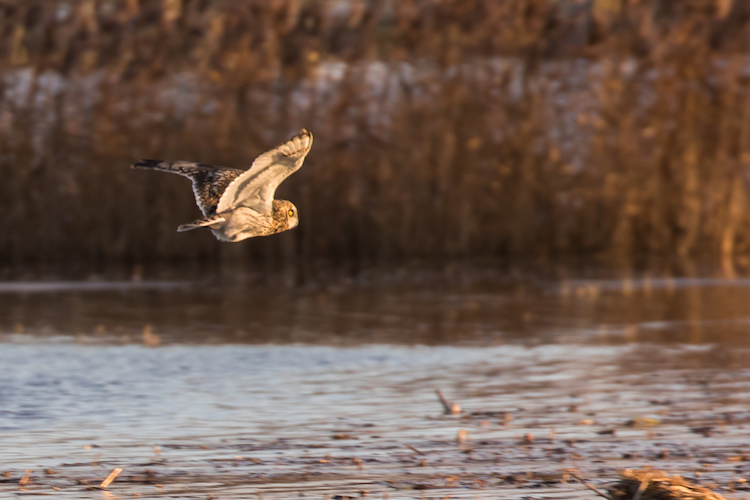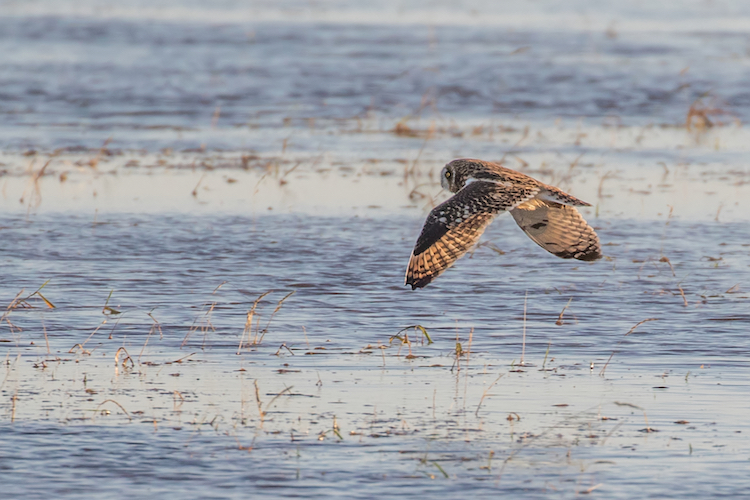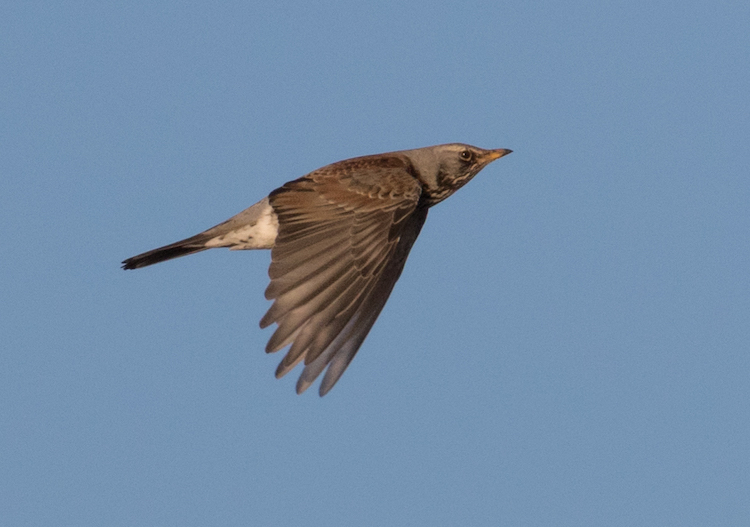- Home
- Cambridgeshire walks
- Winter Sunrise
Winter sunrise at Nene Washes
A crisp, winter sunrise and a beautiful location - what a wonderful way to start a Sunday morning photo walk!
Leaving a nice cosy bed at 5:30 am and scraping ice off the car windscreen may not be everyone's idea of early morning fun. But for me, the opportunity for stunning nature photography was worth it, although my husband wasn't so keen.
After an "interesting" forty-five minute drive, along frosty, narrow roads, we neared our destination - RSPB Nene Washes in Cambridgeshire.
The sun peeped above the horizon, spreading a beautiful golden light over the flat landscape. Hoping the winter sunrise would last, we rose over a humpback bridge to see the glorious vista open out below us. It took my breath away!
If this account inspires you and you want to learn more about harnessing the magic of the day's first and last light, diving into my guide on Golden Hour Photography can provide the essential tips and techniques for making the most of these moments.
Cold, cold fingers and a winter sunrise
Despite being bundled up in multiple layers, my fingers were so cold it was hard to control the camera.
However, my husband noticed a wide smile spreading across my face as we started our walk.
The photograph below, taken with a long zoom lens, captures a small portion of the breathtaking scene before us.
 Winter sunrise over the Nene Washes
Winter sunrise over the Nene WashesShort Eared Owls
A raptor fanatic, I had been hoping I might glimpse the Short Eared Owls that frequent the area.
I couldn't believe my luck when, within a few minutes of our arrival, I spotted one hunting over the water.
I was all fingers and thumbs and my reactions were too slow, resulting in capturing the bird as it flew away from us. But I had seen my first ever Shortie.
My smile had turned into a wide grin, which remained frozen to my face for the rest of the morning.

Happily, the owl returned several times, allowing me the chance to improve my camera technique and get some better photographs.
As the bank we could walk along was quite some way from the water, I was glad I had packed my extender for the long lens to give a little extra reach.


Whooper Swans
The owl wasn't the only wildlife on view. Out on the water was a family of Whooper Swans, their white feathers glowing in the low golden sunshine. The young birds would have been this year's babies, and hadn't yet developed their yellow beaks.
Another great place for Whooper swans in the area is Welches Dam on the Ouse Washes. You can read about our visit to this reserve here.

 Young whooper swan taking flight
Young whooper swan taking flightBirds in flight photography
Other wildfowl were around, but too far out in the water to photograph. Instead, I concentrated on practising my birds in flight photography as they passed overhead. I saw mallards, teals, pochards, shovelers, wigeons, gadwalls, and my first pintail ducks.
 Flock of Wigeon
Flock of Wigeon Pintail ducks
Pintail ducks Male Shoveller (top left) and Gadwall
Male Shoveller (top left) and GadwallThere were a few lapwings, also known as Green Plover, flying around so I singled one out and took a series of pictures as it flew past. The benefit of a fast burst mode (10 frames per second) on the Canon 7D mark 2 meant that I managed one shot with the bird's wings in the upwards position.
When we first moved to West Cambridgeshire over 40 years ago, these birds were numerous, but they have declined in recent years.
 Lapwing or Green Plover
Lapwing or Green PloverThe Short Eared Owl was not the only raptor we saw during this wonderful winter sunrise. A female Kestrel was also hunting over the water.

At one point it appeared that the Kestrel itself was being hunted by a Black Headed Gull. These gulls only have the characteristic dark head during the breeding season.

The last raptor we spotted was a Marsh Harrier, way out over the water. The next picture is an extreme crop.

Fieldfare, a type of winter thrush, were also in abundance. I always love to see these birds when they visit us in the colder months.


British mammals
We find six species of wild deer in the UK. Although common, it is rare to see the little Roe deer (one of our two native species) out in the open as they keep to wooded areas. Therefore, I was delighted to spot a little group of one buck and two does bounding along beside the water.
As the background was a similar colour to their coats, it was tricky for the autofocus to lock on, so I reverted to focusing manually. I opened the aperture to its widest setting of F5.6, increased the ISO to 640 and the resulting shutter speed of 1/1600sec was fast enough to get sharp pictures as they raced along.
If this sounds like a foreign language to you, check out my page on how to change camera settings.



Until this time we had the place to ourselves, but by 10:00 am other people were starting to arrive. When one couple we spoke to told us a group of 200 people were due before noon we decided it was time to head home and warm up.
I was also eager to download the more than 1000 wildlife photographs I had taken during this glorious winter sunrise at Nene Washes.
An Unexpected Sighting!
We headed back to the Nene Washes at the end of October 2018. However, it proved to be a little early in the year as there was no water on the fields and hence no wildfowl. As it was later in the day there was no winter sunrise either.
After walking for quite some way, my husband asked, "What is that large grey bird with a white head?"
Getting excited, as I knew a certain species had been spotted in the vicinity, I trained my lens on the field he was pointing at.
Sure enough, there were four Common Cranes standing there!
Two adults and two youngsters. It was wonderful to add this rare bird species to my list of species seen that year.
Sadly, they were too far away for anything other than record photographs, yet I was still enthralled by the sound of their calls and could have stayed there listening all day.
Unfortunately my husband was bored at this stage and hinting that he wanted to head back to the car.
The Cranes disappeared from Britain about 400 years ago, and are now enjoying a comeback in certain areas, resulting in a current population of about 160.

On the same day, two years later, we again visited Nene Washes, and the number of cranes in the area had expanded to around 60! I photographed this group as they flew in to roost.


About the Author
Carol is a UK-based wildlife photographer and nature writer with a passion for peaceful walks, patient observation, and capturing life’s quiet wonders.
Through her lens and words, she shares the stories of the natural world — from bluebells and butterflies to birds like the great crested grebe.
Get closer to UK nature
Subscribe to Wild Lens!
Want to discover more hidden walks and wildlife moments?
I’d love to share my latest nature finds, photo tips, and peaceful walk recommendations with you.
💌 Join my newsletter Wild Lens—it’s free, occasional, and always rooted in a love of the natural world.
Subscribe below and come exploring with me.






